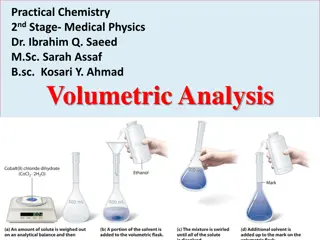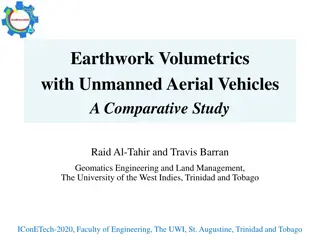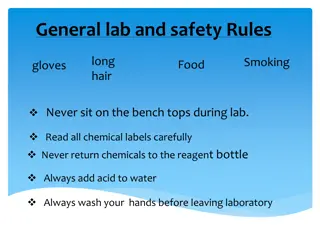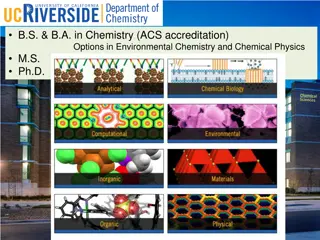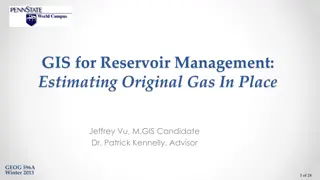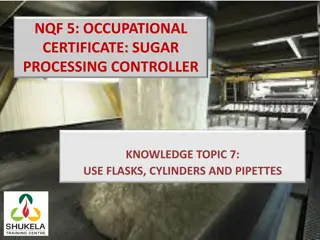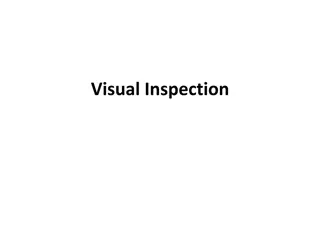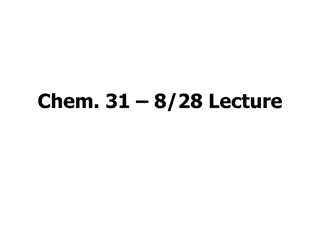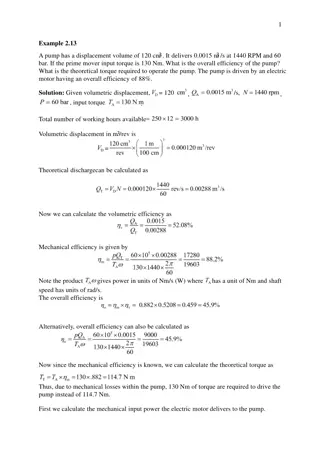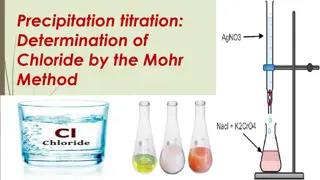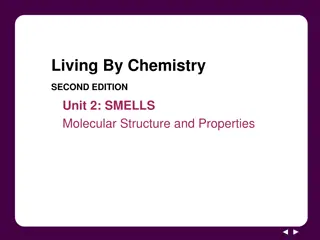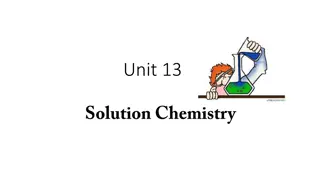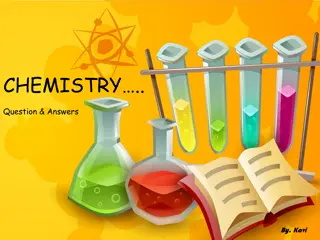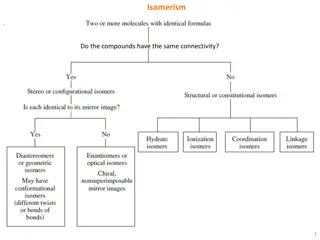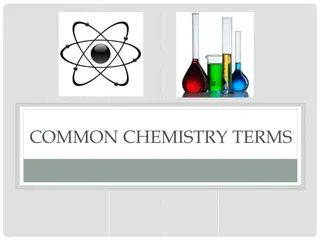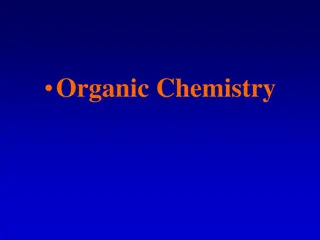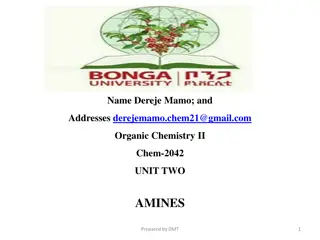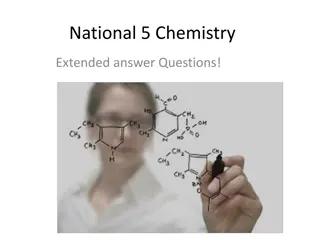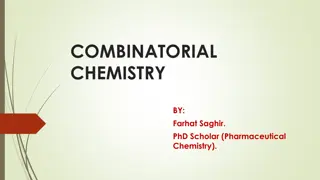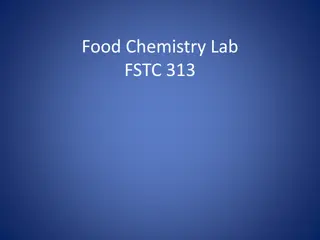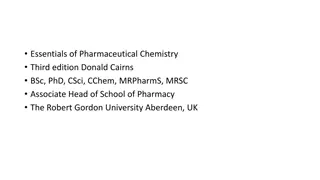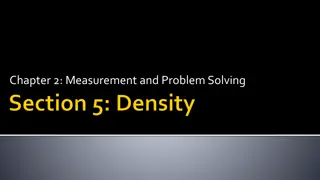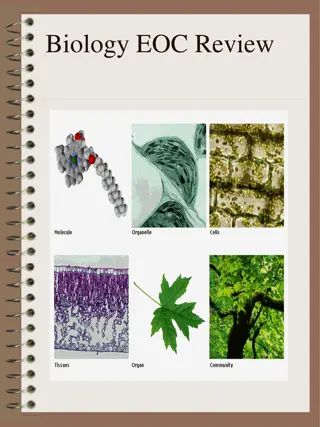Understanding Volumetric Analysis in Chemistry
Volumetric analysis involves various types of titrations such as acid-base, precipitation, complex formation, and oxidation-reduction. It requires a clear endpoint, precise measurements, and specific conditions for reactions to occur accurately. Standard solutions are used as titrants, and the reactions are based on known chemical compositions and reactions between analytes and titrants.
Uploaded on Oct 01, 2024 | 0 Views
Download Presentation

Please find below an Image/Link to download the presentation.
The content on the website is provided AS IS for your information and personal use only. It may not be sold, licensed, or shared on other websites without obtaining consent from the author. Download presentation by click this link. If you encounter any issues during the download, it is possible that the publisher has removed the file from their server.
E N D
Presentation Transcript
Volumetric analysis Chemical reaction in volumetric analysis : o Acid-base or (vice versa) titrations o Precipitation titrations o Complex formation titrations o Oxidation reduction (redox) titrations
Titration Chemical analysis which can be used to determine the concentration of a known reactant called titrant (B) ( standard solution ) and volume is used to react with a measured quantity of reactant (Analyte) has been consumed when the Endpoint of titration is reached . Because volume measurements play a key role in titration , it is known as volumetric analysis. (A) that a A + b B r R
Condition of titration reaction: The reaction should be rapid , complete , and possible to describe by balanced chemical reaction and equal. There must be a clear change in the nature of the solution at the endpoint of the reaction. The appropriate indicator should be available to indicate the endpoint of the reaction .
Acid-Base Titrations Are based on the neutralization reaction between the analyte and an acidic or basic titrant. Neutralization is also called a water formation reaction. A strong acid react with a strong base to form a neutral (PH=7) solution . A strong acid react with a weak base to form an acidic (PH<7) solution . A weak acid react with a strong base to form an a basic (PH>7) solution . NaOH + HCL NaCL+ H2O
Is a solution containing the specified volume of a known weight of the dissolved substance. Characteristics of standard material : Be of high purity. With known chemical composition. Stable With high equivalent weight. Easy solubility in water and proper solvents. 1. 2. 3. 4. 5.
It is a weak acid or base and there is a combination of one electrolyte and the other is not electrolyte and are in equilibrium with some. balance dissociation HIn colorless not electrolyte InH H+ + In- electrolyte weak red pink End point : The point at which the reaction ends where a clear change in the color of the solution occurs.
Fill the burette with an HCL solution of known concentration Drag 10 mlof NaOH solution of know concentration 0.1 N into a conical flask Add2 dropsfrom phenolphtalin indicator. Titrate NaOH solution by adding HCL from the burette slowly with constant stirring until the color turns from pink red to colorless . Calculate the volume down of HCLfrom the burette. Repeat the previous steps again so that you reach a volume close to the first volume difference between them is very little ) 0.1-0.3 ). Calculate the basicity of NaOHof the following relationship N1 V1= N2 V2 Calculate the concentration of NaOH per liter of solution. A. B. C. D. E. F. G. H.
Fill the burette with an HCL solution concentration Drag 10 mlof Na2CO3solution of know concentration 0.1 N into a conical flask . Add2 dropsfrom methyl orang indicator. Titrate Na2CO3 solution by adding HCL from the burette slowly with constant stirring until the color from yellow to pink red . Calculate the volume down of HCLfrom the burette. Repeat the previous steps again so that you reach a volume close to the first volume difference between them is very little ) 0.1-0.3). Calculate the acidity of HCLof the following relationshipN1 V1= N2 V2 Calculate the concentration of HCL per liter of solution. of unknown A. B. C. D. E. F. G. H.
Calculation of total acidity CH3COOH Fill the burette with an NaOH solution of known concentration from the previous experience. Drag 10 mlof CH3COOH solution of unknow concentration into a conical flask Add2 dropsfrom phenolphtalin indicator. Titrate CH3COOH solution by adding NaOH from the burette slowly with constant stirring until the color turns to light pink . Calculate the volume down of NaOHfrom the burette. Repeat the previous steps again so that you reach a volume close to the first volume difference between them is very little ) 0.1-0.3 ). Calculate the acidity of CH3COOHof the following relationship N1 V1= N2 V2 . H. Calculate the concentration of CH3COOH per liter of solution and in 10 ml of solution. A. B. C. D. E. F. G.


